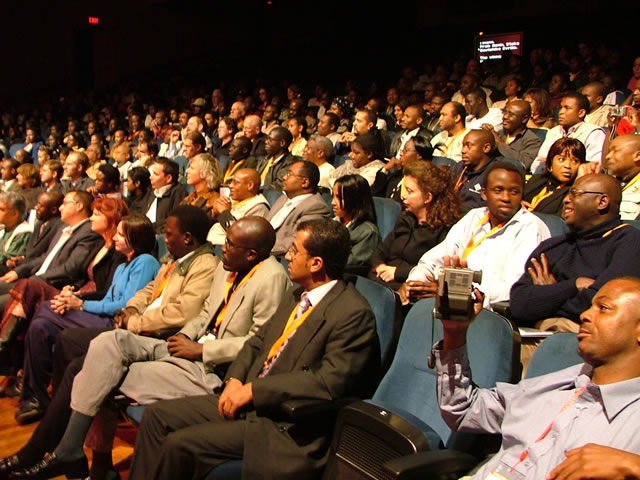
Tanzania's Minister for Eneergy and Minerals Hon William Ngeleja
According to the Minister for Energy and Minerals, Mr. William Ngeleja, currently about 890 percent of the energy consumed in the country is in form of traditional biomass, eight percent is from imported petroleum products. 1.5 percent is in form of electricity generated by hydro-power machines and other thermal power plants. In achieving the objectives of Tanzania, pro-sustainable development of bio-energy policies, institutional, legal and regulatory framework need to be in place to property guide the industry. For Tanzania, the subject of discussion should not be whether to promote bio-fuel or not, but how to develop bio-fuels to ensure a win-win situation to all parties. According to TaTEDO, rural electrification in Tanzania has been receiving much attention without much action according, and if no serious action is taken , Tanzania’s economic development plans will remain a dream. TaTEDO attributes this to lack of commitment on the part of government , which it says has been addressing the issue more verbally than practically. It adds that this has been the trend since independence time and there is little hope that any serious step will be taken to solve the problem in the near future. According to the Commissioner for Energy and Minerals, Mr. Bashir Mrindoko, rural electrification in the country is a continuous process that requires a lot of investments.
The public demand for enough electricity at a very low costs which make it difficult for investors to put their money into the sector. According to him, only 10 percent of the population in the country has access to electricity, while 2 percent of the rural population which accounts for over 80 percent of the total population continues to stay in darkness. It has been the responsibility of the government through the Tanzania Electric Supply Company (TANESCO) not only to generate and distribute electricity to extend the grid networks to rural areas. Rural electrification in Tanzania has for a long time been through grid extension or the use of off-grid diesel power plants. In some few cases, local micro hydro power plants have been the only possible options. It’s further reported that access to modern energy services particularly electricity, is not only a pre-requisite for agreeable living standards, but it is also an indispensable input for productive, economic and improved social services. The positive impact of electricity for the poor in rural areas and basic activities such as pumping water for drinking and irrigation purposes, lighting for extending working studying hours and powering small-scale rural industries. However, in spite of these obvious socio-economic benefits, the percentage of the people accessing electricity in rural Tanzania remains very low at 2 percent. In addition to the few rural areas with electricity supply, frequent power cuts, erratic voltage levels and fluctuations negatively affect the frequency of supply. TaTEDO reports that if rural electrification in Tanzania becomes a reality, it can substitute the use of kerosene and batteries, which are the main rural energy sources for lighting, powering radios, televisions, machines and other appliances. There were unsuccessful efforts in the 1970s to establish the Tanzania Rural Electrification. This lowered the pace of developing rural electrification and as a result there has been a slow progress. 36 million out of a population of over 40 million Tanzanians, mostly in rural areas are living without electricity. Access to electricity for the rural people has increased from below one percent in 1961 to two percent today.











1 comment:
U look sathiyam cinemas Pantry the Modular Kitchen In Chennai is more preferred for looking and sound effects
Post a Comment